| Caesarea |
| The Roman Aqueduct in Caesarea |
| Implemented by: |
Yigal Hanatayev
Vadim Zaytlin
Gavriel Solomon
Yoram Sa'ad
Eng. Yaacov Schefer
|
The Roman aqueduct in Caesarea is a monument representing construction technology, as well as a form of ancient water conveyance, and demonstrates an impressive engineering achievement. Because of the length of the aqueduct engineering solutions are incorporated in it to overcome natural land barriers and to support it in different kinds of soil. The system of arches carrying the water channel is built of roughly hewn kurkar and the walls of the upper water channel were constructed of fieldstones.
In the early 1990’s a team from the Israel Antiquities Authority Conservation Department headed by David Gal carried out conservation work in sections of the Roman aqueduct in Caesarea. The work, financed by the Government Tourism Company, focused on the southern end of the “Arches Beach” section, along the shore between Jisr ez-Zarqa and the Caesarea National Park and included conservation measures meant to stabilize and reconstruct the arches that had collapsed and the walls of the upper channel. In addition to the intervention in this section of the aqueduct, rehabilitation and conservation measures were implemented at other points along the aqueduct to Caesarea: in the late 1990’s the section of the aqueduct located next to Moshav Beit Hanania was treated. The conservation work was carried out in junction with an excavation and included cleaning the place and stabilizing bases without reconstruction. In the early 2000’s conservation engineering treatment was carried out on the section of the aqueduct that crosses Nahal ‘Ada, in the agricultural fields of Beit Hanania, between the moshav and Highway 2. The treatment in both of these segments was underwritten by the Carmel Drainage Authority as part of a comprehensive program to prevent the flooding of the road. The conservation teams were headed by Yigal Merom and Yoram Sa‘ad.
The state of the aqueduct’s preservation along the Arches Beach has deteriorated over the years. Erosion and destruction processes, that is, damage caused by the weather, the spray of the sea water, the action of the salt and the vegetation taking root all lead to the rapid disintegration of the mortar, to the stones losing their hold in the structure thus resulting in the collapse of the monument. The harsh winter storms of 2010 caused serious damage to the aqueduct; they greatly impacted its preservation and significantly increased the hazards and risks to the many visitors that come all year round to the Arches Beach. In addition to natural elements, factors caused by the actions of people, such as vandalism and bonfires set by visitors, further damage the aqueduct.
The Saving the Sites Project was established in 2012 and is financed by the Milestones Program of the Heritage Department in the Prime Minister’s Office. Thanks to the program it was possible to implement measures to save the monument at the points where it was most severely destroyed.
In 2012 conservation work and engineering stabilization were implemented to alleviate any danger of collapse. Several arches in the southern section of the aqueduct on the Arches Beach near the parking lot were stabilized. The conservation team headed by the late Vadim Zeitlin carried out the conservation measures that included filling mortar and stabilizing the building stones, filling lacuna in the monument, completing missing stone work and replacing stones, according to guidelines set down by Ing. Jacob Sheffer. In addition, the walls of the water channel were stabilized and completed. In early 2013 another conservation team, headed by the late Yigal Hantiev, treated the southern end of the aqueduct stabilizing the foundations that were exposed in winter storms. In 2014 other arches were treated north of the section that was attended to in 2012, this time by a conservation team directed by Tsaggai Asemahagn. In 2015 sections will be treated that have recently fallen apart near the section of the aqueduct covered by sand dunes. The work will be carried out by a conservation team headed by Gabi Solomon and accompanied by Ing. Jacob Shaffer.
------------------------------
August 2015
To view the figures, click on the figure caption
|
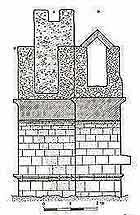 |
1. Schematic cross-section. Peleg 1989
|
 |
2. The southern end of the aqueduct at the Arches Beach, before 1990. Source unknown.
|
 |
3. The aqueduct near Beit Hanania, 2001. Photo: A. Freundlich.
|
 |
4. The aqueduct on Nahal ĎAda, 2001. Photo: A. Freundlich.
|
 |
5. The aqueduct on Nahal ĎAda, 2001. Photo: A. Freundlich.
|
 |
6. The aqueduct at the Arches Beach, winter of 2010. Photo: Y. SaĎad.
|
 |
7 . The aqueduct at the Arches Beach, 2012. Before and after treatment. Photo: G. Solomon.
|
 |
8. The aqueduct at the Arches Beach, 2012. Before and after treatment. Photo: G. Solomon.
|
 |
9. The aqueduct at the Arches Beach, 2012. Before and after treatment. Photo: G. Solomon.
|
 |
10. The aqueduct at the Arches Beach, 2012. Before and after treatment. Photo: G. Solomon.
|
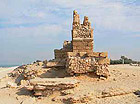 |
11. The aqueduct at the Arches Beach, 2013. Before and after treatment. Photo: G. Solomon
|
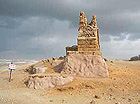 |
12. The aqueduct at the Arches Beach, 2013. Before and after treatment. Photo: G. Solomon
|
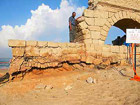 |
13. The aqueduct at the Arches Beach, 2013. Before and after treatment. Photo: G. Solomon
|
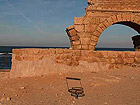 |
14. The aqueduct at the Arches Beach, 2013. Before and after treatment. Photo: G. Solomon
|
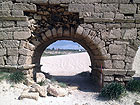 |
15. The aqueduct at the Arches Beach, 2015. Before the treatment. Photo: G. Solomon.
|
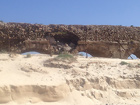 |
16. The aqueduct at the Arches Beach, 2015. Before the treatment. Photo: G. Solomon.
|
|


